Skin
The skin (integumentary system) of all vertebrates is made up of two layers: an outer epidermis that is mostly dead cells filled with the protein keratin and a deeper dermis of connective tissue. The epidermis provides water-proofing and is the source of keratin-derived structures such as scales, hair, feathers, claws and nails. The deeper dermis provides strength and elasticity and is composed of connective tissue with the protein collagen, nerves, and blood vessels. Bone (also a connective tissue) can develop within the dermis of the skin, such as in crocodile scutes. Although differentiating these layers requires microscopic examination (something rarely possible in dinosaur fossils), we can examine some of the structures derived from these layers.
Dinosaur Skin
Our knowledge of dinosaur skin comes from fossilized skin impressions (molds or casts). As such, they show the texture of the outer surface of the skin. Most dinosaur skin appears to be composed of small (often < 1 cm), round, non-overlapping scales. Some dinosaurs are known to also have larger bony scutes (as present in crocodiles).
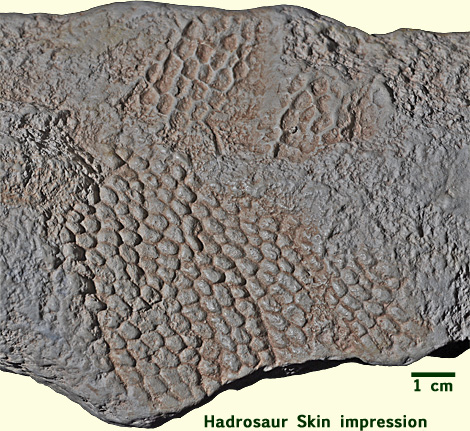
| 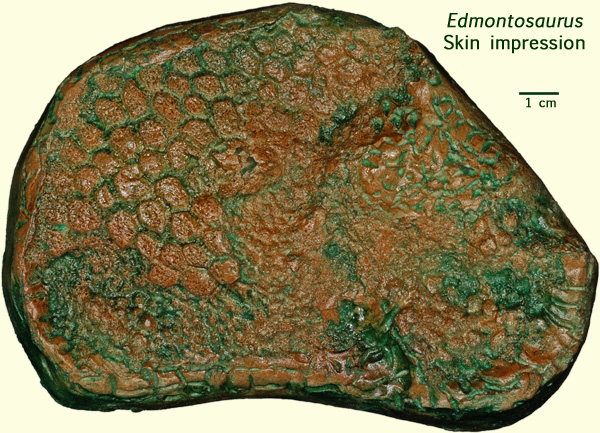
|
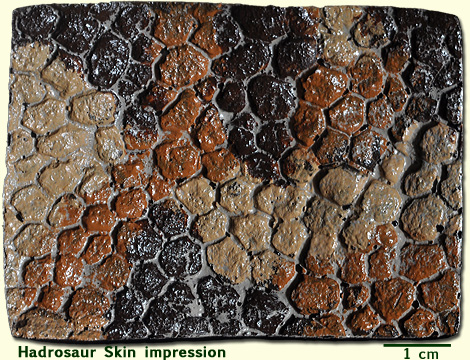
| 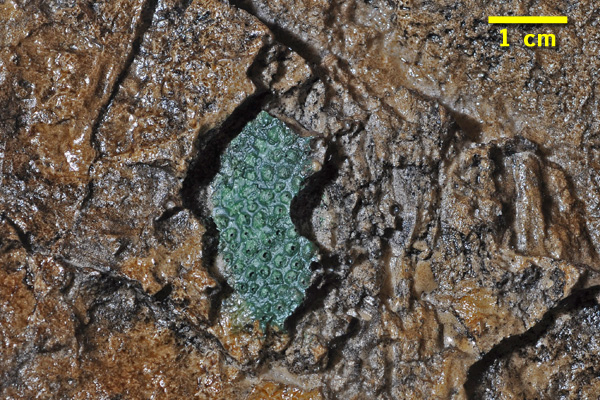
| | Reproduction of skin impressions of several hadrosaurs and a Triceratops
|
Keratin vs. Bone
The shell of the turtle provides a good illustration of the difference between keratin scales derived from the epidermis and bony plates located within the dermis of the skin.
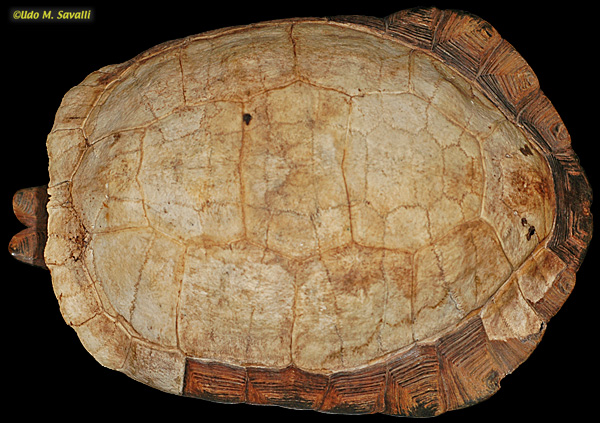
| | Shell of a desert tortoise, showing both the bone plates and the keratin scales (along the posterior edge)
|
Dermal Scutes
Bony scutes (plates) imbedded in the dermis of the skin can provide protection. Their size and extent can vary considerably, from a few widely scattered scutes to interlocking armor. Some examples of fossil scutes are shown.
Alligator, Pleistocene, FL
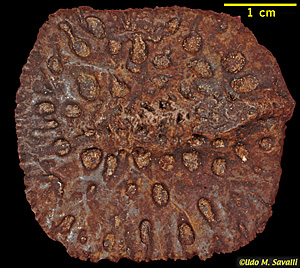
| Champsosaurus, late Cretaceous, SD
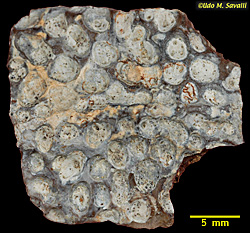
| Glyptodon, Pleistocene, Brazil
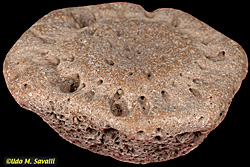
| Ankylosaurus, late Cretaceous, WY
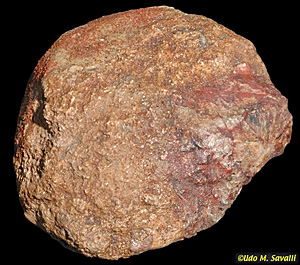
|
|
Stegosaurus fossil showing plates and dermal scutes
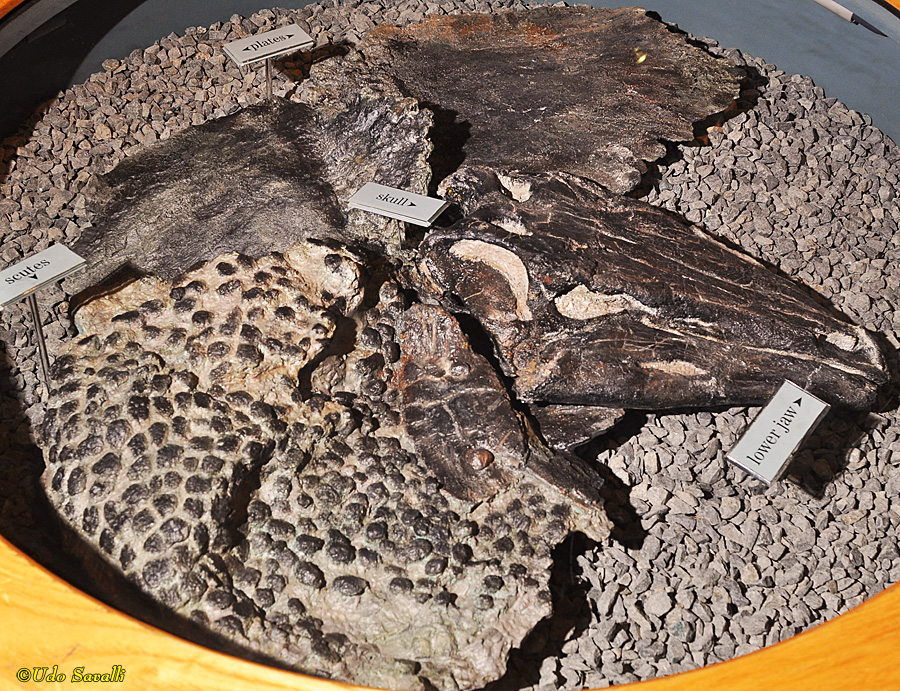
| Gastonia reconstructed skeleton showing a variety of spines, large scutes, and shield of fused smaller scutes
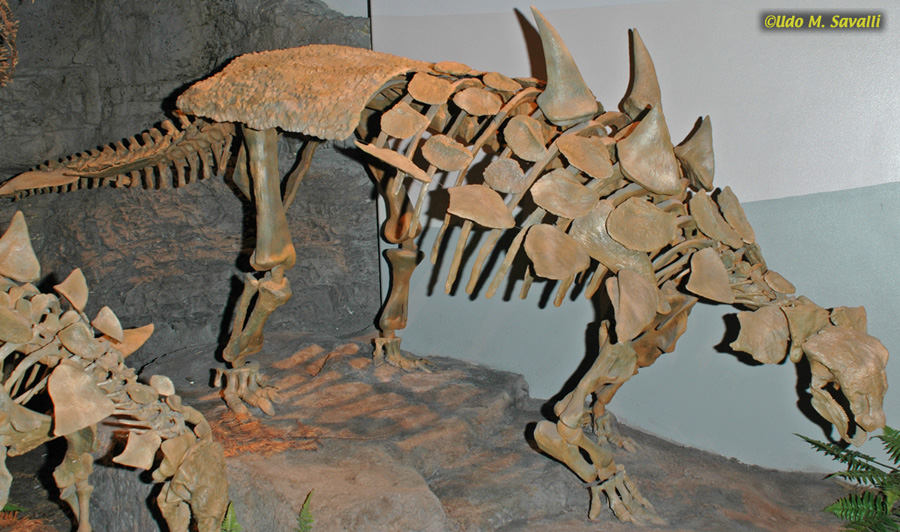
|
Horns
Horns, like claws and hooves, typically have a bone core covered by a keratin sheath. Thus, horns are likely to be longer and more elaborate that the bone cores that are preserved as fossils would indicate. Compare the bone core to the keratin sheath on the skull of the impala and the pronghorn (one of the horn sheaths has been removed from the pronghorn skull).
|
Impala skull (male)
|
Pronghorn skull (male)
|
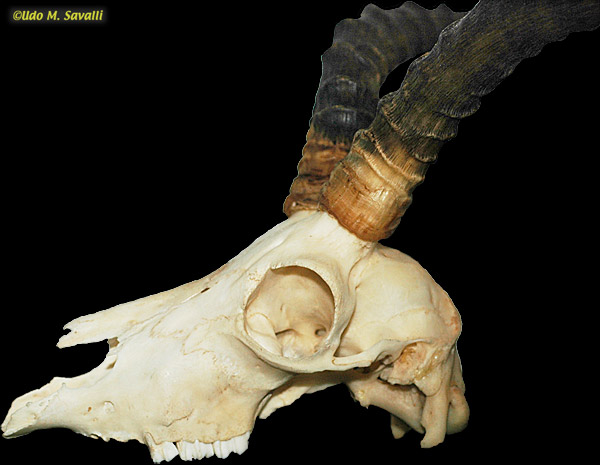
|
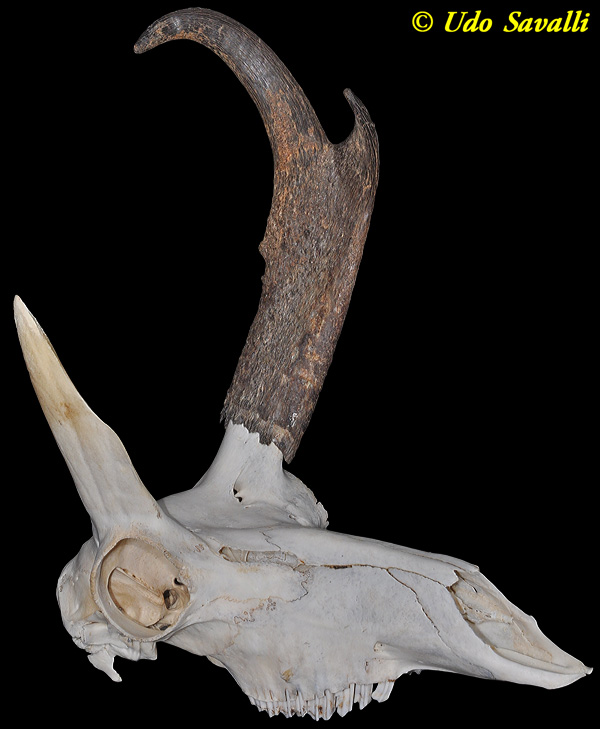
|
|












